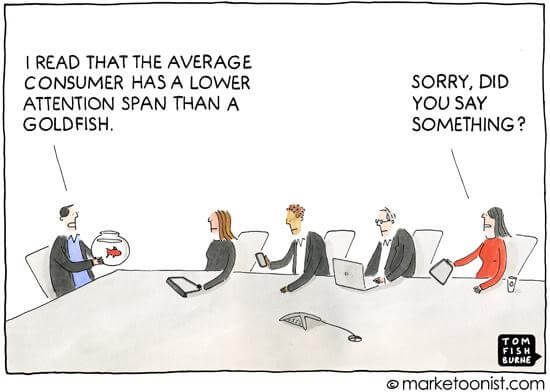All businesses, regardless of size and industry, are beginning to realize the importance of having an online presence. With this realization comes an understanding of digital marketing as a key factor in driving revenue and growth.
Digital marketing consists of several moving parts that must work together to drive desired results. Two significant aspects of all digital marketing strategies and campaigns are traffic and conversion.
For any business to succeed online, it must do two things very well:
- Drive traffic to their website and offers.
- Convert that traffic into either subscribers or customers.
Content marketing and conversion rate optimization (CRO) are the major drivers of traffic and conversions, respectively. The better a company gets at implementing these strategies in combination, the faster it can expand.

What is Content Marketing?
According to the Content Marketing Institute, “Content marketing is a strategic marketing approach focused on creating and distributing valuable, relevant, and consistent content to attract and retain a clearly defined audience—and, ultimately, to drive profitable customer action.”
Content marketing is the backbone of all online businesses. We live in a noisy world where the attention span of the average person has been likened to that of a goldfish. That means you need to find a way to capture (and keep) the attention of potential customers.

Good content will help you do that. Content can include blog posts, articles, case studies, email newsletters, website or landing page content, social media posts and eBooks or white papers. The two primary methods for generating traffic with your content are paying for placements in search results or page content, or simply allowing it to slowly bring people in through search.
Social media ads and search engine marketing fall under paid traffic. Organic search results, backlinks, and social media viral content reach fall under earned traffic. Paid ads need good copywriting to be effective, while earned media needs SEO. Paid and earned traffic can be combined for maximum effect.
What is Conversion Rate Optimization?
According to Moz, “Conversion rate optimization (CRO) is the systematic process of increasing the percentage of website visitors who take a desired action &emdash; be that filling out a form, becoming customers or otherwise.”
Only about 22 percent of businesses are satisfied with their conversion rates. That leaves a lot of room for improvement. As indicated by Econsultancy’s study (pictured below), many marketers are using A/B testing as a major aspect of their promotional strategies.

When it comes to converting traffic into either subscribers or customers, many things come into play. In this grand scheme of things, CRO is just a little piece of the whole puzzle. To put things into perspective, an effective conversion strategy has four parts that must align.
- Conversion Path: The process or path by which a website visitor becomes a lead or a customer. The most basic conversion path consists of a content offer, a call-to-action, a landing page and a thank you page. An additional option might be to offer newly acquired leads special offers to become customers.
- Conversion Rate: The percentage of people who take a desired action divided by the traffic count. This could be the percentage of people who download your free offer, subscribe to your newsletter, buy something, or take the defined desirable action on your site.
- Conversion Rate Optimization: The process of discovering why website visitors are not converting and subsequently optimizing the content and design of the website to boost the rate of conversions. CRO involves a lot of testing. One of the most common methods of CRO is A/B testing.
- A/B Testing: Also called split testing or variation testing, this process compares two versions of a marketing element to find out which one performs better. These experiments are carried out randomly by sending traffic from the same demographic to different variations of the same page. Commonly tested elements include headlines, images, call-to-action text and button color.
What is the Link between Content and Conversion?
As explained in the previous section, for any business to succeed online, it needs two things&emdash;traffic and conversions. It doesn’t matter whether you are in B2B or B2C.
Yet, many businesses still struggle to drive traffic to their websites. And those who do are often unable to convert that traffic into paying customers or subscribers. The reason for this is simple&emdash;people focus on content marketing and conversion rate optimization as two different things instead of two sides of the same digital marketing coin.
So, why is there so much disparity between content and conversion? What is the vital link between conversion rate optimization and content? The answer is a sales funnel. When a business struggles with harmonizing content and conversion, it likely has no clearly defined sales funnel.
The Definition of a Sales Funnel
A sales funnel is a series of steps that someone takes going all the way from not knowing about you to actually buying from you.

(Source)
The journey a stranger takes from being unaware of you to becoming your customer is called a buyer’s journey, and a funnel helps you map out and anticipate those steps. Every funnel can easily be broken down into three steps:
- Attract: This is the top of the funnel and involves attracting your ideal customers.
- Nurture: This is the middle of the funnel, where you nurture prospects whom you have attracted.
- Convert: This is the bottom of the funnel, where you convert prospects into customers.
The goal of every digital marketing campaign is to attract the right prospects, get them to know, like and trust you by nurturing them, and convert them into paying customers.
To increase your website’s traffic and conversion, you need to synergize your content marketing and conversion rate optimization efforts. This means you need to map your content strategy to your funnel and optimize every step for conversions.
Three Steps to Optimize Your Content
Try this three-step process to get your content converting more reliably:
- Identify and tailor your content to your ideal customer. The first step in every sales funnel is to attract your ideal customers. Many businesses struggle with generating traffic because they are creating content for the wrong audiences. Once you’ve identified your ideal target customer, tailor your content to their needs and pain points. That way, your content (both paid and earned) will be relevant, and you will have more quality traffic coming to your site.
- Set up mini-conversions. Once you have attracted the right audience with your content, you need to encourage them to take the next step towards becoming a customer. You might decide to do this through a free download or ask the audience to subscribe to your newsletter, redeem a discount code or contact you for a free consultation. Identify what the next step toward the end of your funnel is and optimize for mini-conversions along the way.
- Boost conversion rates by optimizing landing pages. The final step in your sales funnel is when you either make the sale or ask for personal contact information to allow you to continue to market to your prospect. A landing page is a critical element of any website’s lead (or revenue) generation process. Key elements of your landing page to optimize for conversions are:
- Headlines
- Main Images
- CTA Forms
- Social Proof or Testimonials
- Third-party endorsements
To effectively optimize landing pages for conversions, you need to test every single element until you see improvement. That means you must test different headlines, images and CTA form fields. You also need to test the number of testimonials and 3rd-party endorsements you include in your landing page.
It will also help to do exhaustive research to see how comparable landing pages have been designed. One way is to visit marketplaces that aggregate online ecommerce businesses for sale, allowing you to look at performance metrics, as well as visit the still-live sites to fully review their content. See what the top-valued sites have in common and look for inspiration.
However you approach your content, and whatever resources you use for research, you must switch things up until you see what sticks. And when you do, stick with it.
Conclusion
Conversion rate optimization and content marketing are two different marketing methods that, when combined, can form a powerful lead-acquisition and customer-generating machine.
The missing link between CRO and content is a sales funnel. When a company lacks a defined sales funnel for its online brand, it will struggle to drive and convert traffic into customers.
The solution is to map your content strategy to your sales funnel and optimize for mini-conversions at every stage of the funnel. That means you must identify and attract your ideal customers with your content and optimize landing pages to convert as much as possible.
Combining great content with CRO is the key to exposing missed opportunities within your business. The changes you make will likely help you maximize your marketing campaigns and move your prospects toward doing business with you.
Have you tried these steps in boosting your customer base? What has been your experience? Tell us about it in a comment. We’d love to hear from you.
About the Author
 Victoria Greene is an ecommerce marketing expert and freelance writer who likes to see online retailers learn and grow. You can read more of her work at her blog Victoria Ecommerce.
Victoria Greene is an ecommerce marketing expert and freelance writer who likes to see online retailers learn and grow. You can read more of her work at her blog Victoria Ecommerce.







